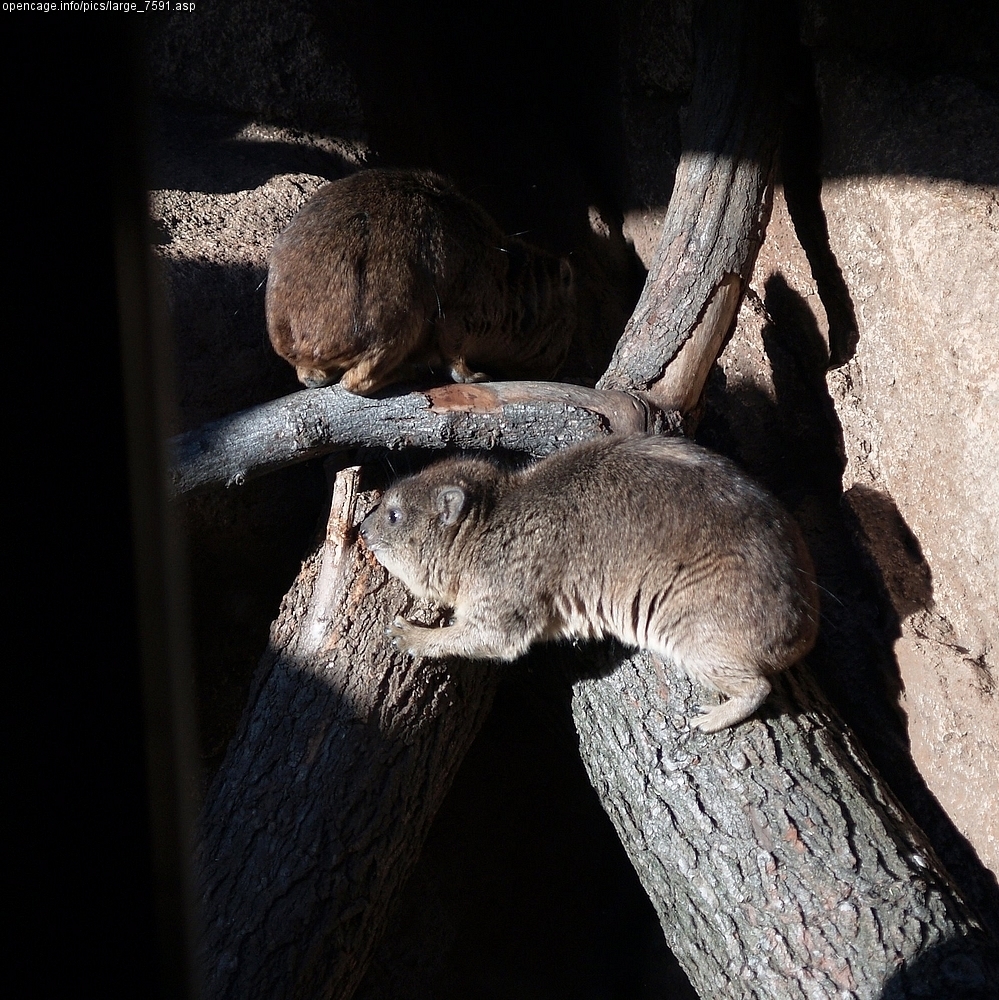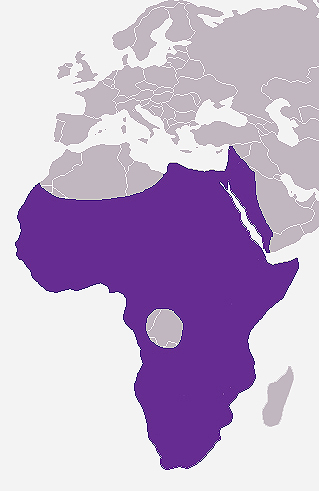- Cape Hyrax
Taxobox
name = Cape Hyrax
status = LC
status_system = iucn3.1
trend = unknown
status_ref = [IUCN2006|assessors=Barry "et al"|year=2006|id=41766|title=Procavia capensis|downloaded=11 May 2006 Database entry includes justification for why this species is of least concern ]

image_width = 200px
regnum =Animal ia
phylum = Chordata
classis =Mammal ia
ordo =Hyracoidea
familia =Procaviidae
genus = "Procavia"
genus_authority = Storr, 1780
species = "P. capensis"
binomial = "Procavia capensis"
binomial_authority = (Pallas, 1766)
range_
range_map_caption=Range mapThe Cape Hyrax, or Rock Hyrax, ("Procavia capensis") is a species in the order
Hyracoidea . Like allhyrax es, it superficially resembles aguinea pig with short ears and tail. They are known as dassies in South Africa. TheSwahili names for them are pimbi, pelele and wibari, though the latter two names are nowadays reserved for the tree hyraxes. This species has many subspecies, many of which are known as Cape Hyrax or Rock Hyrax, although the latter usually refers to African varieties.The rock badger is said by the Jews to be not kosher, and therefore may not be eaten under any circumstances. The rock badger's name in Hebrew is "shafan sela" (שפן סלע) or Rock Shafan, but the meaning of "shafan" is obscure..cite web
title = The Camel, the Hare and the Hyrax, chapter 6
url = http://www.zootorah.com/hyrax/hyrax.pdf]Physical description and lifestyle
The skull of the Cape Hyrax has a pair of long
tusk -likeincisors andmolars that resemblerhinoceros ' molars. The forefeet areplantigrade , and the hindfeet semi-digitigrade . The soles of the feet have large, soft pads that are kept moist with sweat-like secretions. Male hyraxes are slightly larger than females.Fact|date=August 2008Cape Hyrax give birth to two or three young after a 6-7 month
gestation period. The young are well-developed at birth with fully-opened eyes and completepelage . Young can ingest solid food after two weeks and are weaned at ten weeks. Young are sexually mature after 16 months, reach adult size at three years, and typically live about ten years.Fact|date=August 2008Hyraxes live in herds of up to 80 individuals. These herds are subdivided into smaller
flocks consisting of a few families and headed by an adult male. Hyraxes spend most of their time resting in large huddles or basking alone. These behaviors probably serve to help regulate body temperature as hyraxes' body temperature fluctuates withambient temperature (i.e. they are not strictlyhomeothermic ).Fact|date=August 2008Cape Hyraxes have been jokingly referred to as "Shawarma Bears," a reference to their size and shape, which is very similar to that of the Middle Eastern food
Shawarma .Fact|date=August 2008Cape Hyraxes and medical treatment
Cape Hyraxes produce large quantities of
hyraceum (sticky mass of dung and urine) that has been employed by people in the treatment of several medical disorders, includingepilepsy andconvulsions .Relationship to Elephants
Hyraxes are widely stated to be the closest living relatives of elephants. But not all scientists support that proposal. Recent morphological and molecular based classifications reveal the
Sirenian s to be the closest living relatives of elephants, while hyraxes are closely related but form anoutgroup to the assemblage of elephants, sirenians, and extinct orders likeEmbrithopoda andDesmostylia .cite journal | author = Asher, R.J., Novacek, M.J., Geisher, J.H.| year = 2003 | title = Relationships of endemic African mammals and their fossil relatives based on morphological and molecular evidence | journal = J. Mamm. Evol. | volume = 10 | pages = 131–194 | doi = 10.1023/A:1025504124129] .Gallery
References
External links
* [http://animaldiversity.ummz.umich.edu/site/accounts/information/Procavia_capensis.html Animal Diversity Website - Procavia capensis]
Wikimedia Foundation. 2010.
